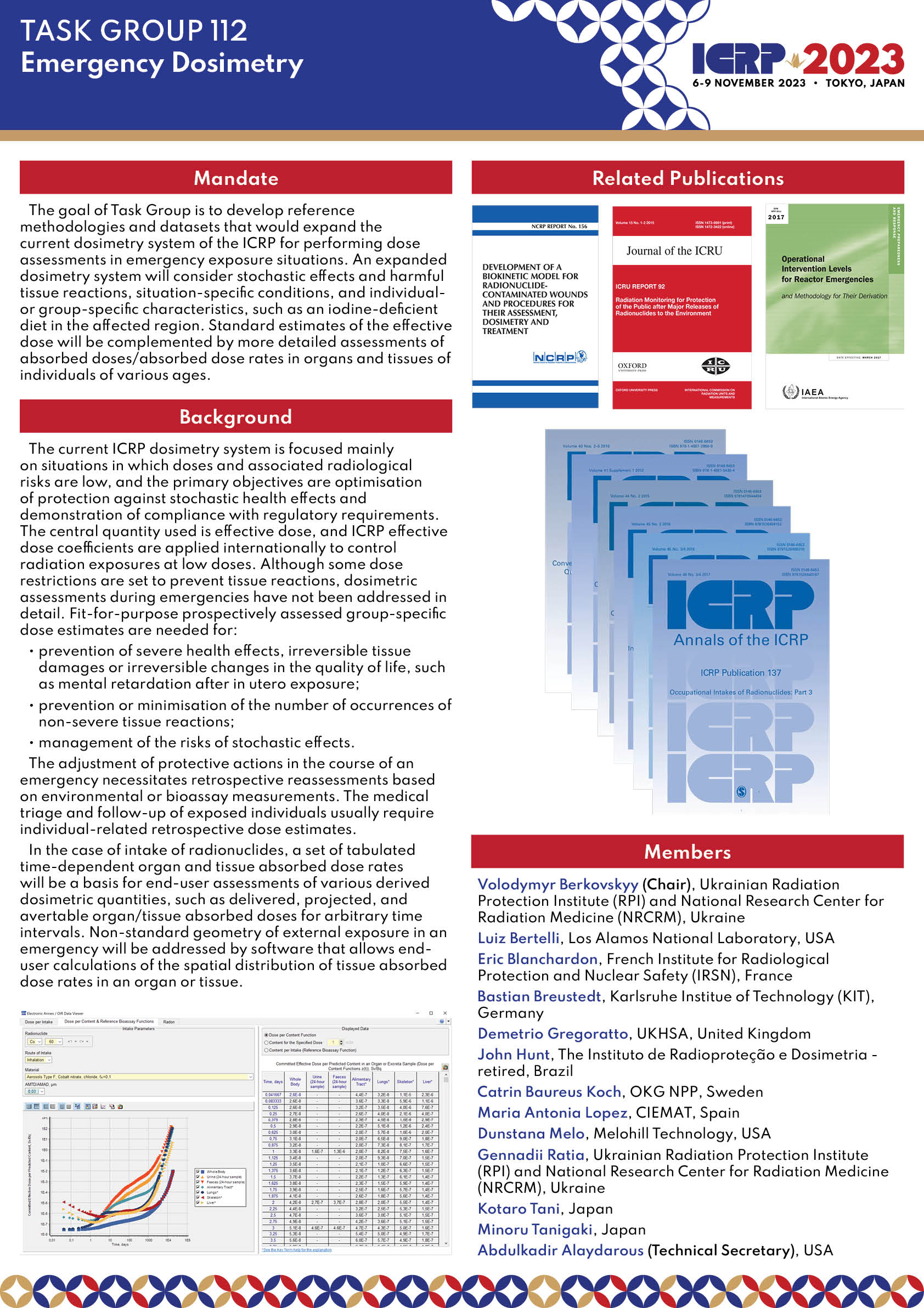Task Group 112
Emergency Dosimetry
Under Committee 2
The current ICRP dosimetry system is focused mainly on situations in which doses and associated radiological risks are low and the primary objectives are optimisation of protection against stochastic health effects and demonstration of compliance with regulatory requirements. The central quantity used is effective dose and ICRP effective dose coefficients are used internationally in the control of radiation exposures at low doses. Although dose limits (equivalent dose) are also set to prevent tissue reactions, the requirements for dosimetric assessments during emergencies have not been addressed in any detail. Nuclear or radiological emergencies are relatively rare but, when they occur, emergency workers, first responders and the general public may receive significant external and internal exposures from a range of radionuclides. Radiological assessment and protective actions need to be implemented promptly to mitigate the impact on human health. A methodology for the quantitative description of exposures is among the essential elements of emergency management systems.
The goal of the Task Group is to develop reference methodologies and datasets that would expand the current dosimetry system of the ICRP for performing radiological assessments in emergency exposure situations. An expanded dosimetry system will consider both stochastic effects and harmful tissue reactions, situation-specific conditions (e.g. contamination of wounds, thyroid blocking or DTPA treatment), and individual- or group-specific characteristics (e.g. iodine-deficient diet in the affected region). Standard estimates of effective dose will be complemented by more detailed individualised assessments of absorbed doses/absorbed dose rates in organ and tissues of individuals of various ages.
ICRP 2023 Poster
| Volodymyr Berkovskyy (Chair), Ukrainian Radiation Protection Institute and National Research Center for Radiation Medicine, Haematology and Oncology, Ukraine | ||
| Luiz Bertelli (Member), retired from Los Alamos National Laboratory, USA | ||
| Eric Blanchardon (Member), French Authority for Nuclear Safety and Radiation Protection, France | ||
| Bastian Breustedt (Member), Bundesamt für Strahlenschutz (BfS), Germany | ||
| Demetrio Gregoratto (Member), UKHSA, United Kingdom | ||
| John D. Harrison (Member), Oxford Brookes University and Public Health England, United Kingdom | ||
| John Hunt (Member), The Instituto de Radioproteçăo e Dosimetria - retired, Brazil | ||
| Hyeonil Kim (Member), Korea | ||
| Catrin Baureus Koch (Member), OKG NPP, Sweden | ||
| Maria Antonia Lopez (Member), CIEMAT, Spain | ||
| Dunstana Melo (Member), Melohill Technology, USA | ||
| Gennadii Ratia (Member), Ukrainian Radiation Protection Institute (RPI) and National Research Center for Radiation Medicine (NRCRM), Ukraine | ||
| Kotaro Tani (Member), Japan | ||
| Minoru Tanigaki (Member), Japan | ||
| Leticia Irazola Rosales (Technical Secretary), Centro de Investigación Biomédica de La Rioja, Spain | ||
| Rodolfo Cruz-Suarez (Representative), International Atomic Energy Agency (IAEA), Austria |
